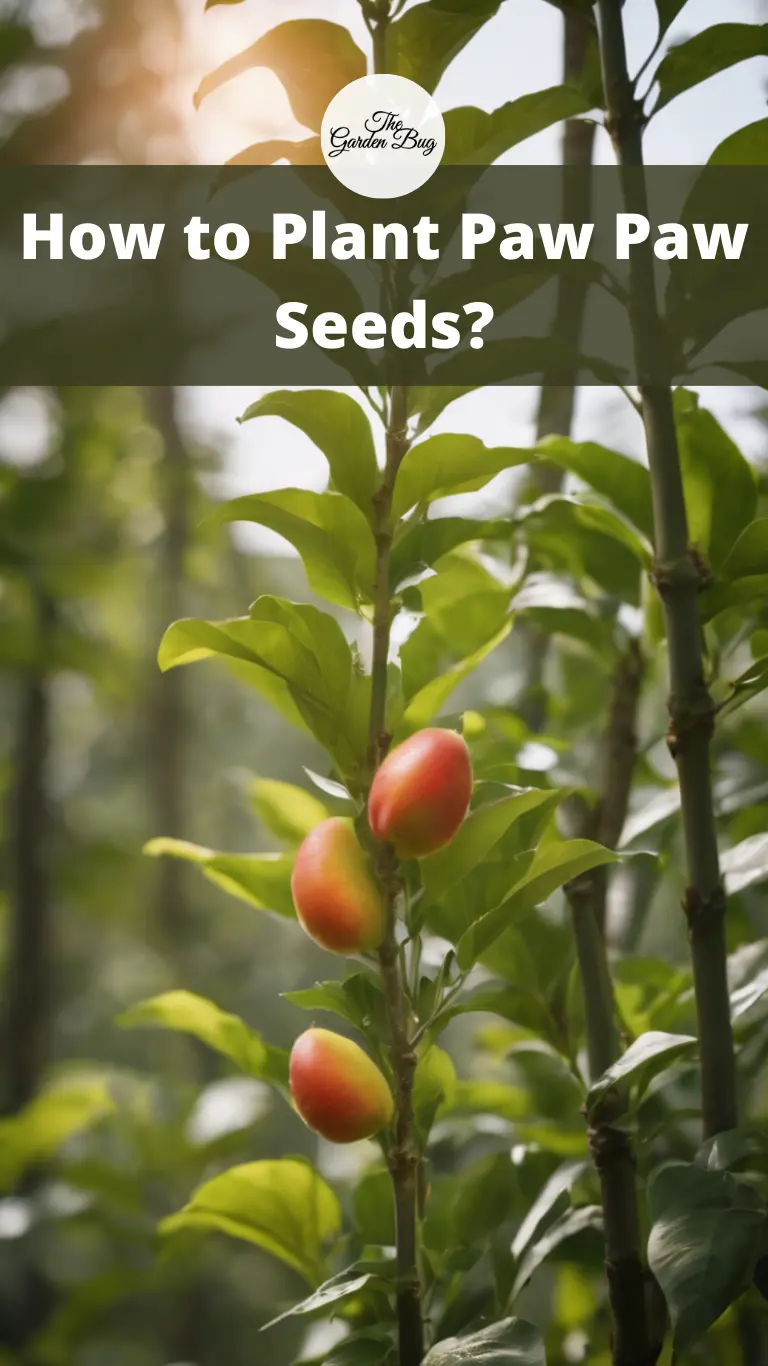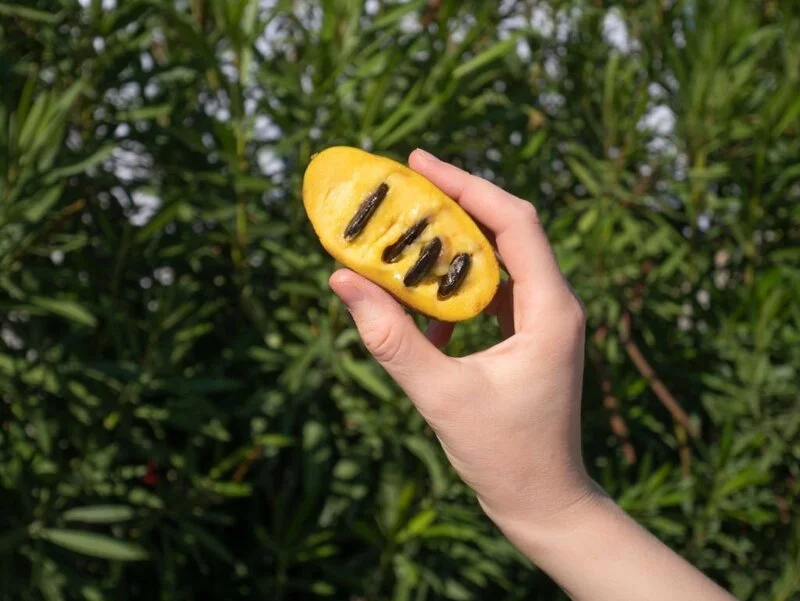Imagine biting into a ripe, juicy fruit that tastes like a cross between a banana, mango, and melon. That’s the delight of the Paw Paw – a tree that grows a fruit with a tropical taste despite being native to the chilly regions of North America. Growing a Paw Paw tree from a seed is like embarking on a fascinating journey. It’s a slow dance with nature that rewards patience, care, and love. And the prize? The pleasure of watching a seed sprout, grow, and finally bear delicious fruit. Let’s get started!
Paw Paw Seeds
Before we jump into planting, it’s crucial to understand Paw Paw seeds. These seeds are not like typical fruit seeds you might be familiar with. They are large, dark brown, and need to be treated with extra care.
An important trait of Paw Paw seeds is that they cannot dry out. If they do, they lose their ability to germinate. Therefore, they must be kept moist from the moment they are harvested until they’re planted.
Another unique aspect is that Paw Paw seeds require a process known as ‘stratification’ to germinate. Stratification is a fancy word for a simple concept. It means that the seeds need to experience a period of cold before they can sprout. In nature, Paw Paw seeds go through this process during winter. But don’t worry, we’ll explain how you can replicate this process at home in the next section.
Now that we’ve understood our seeds a little better, let’s get them ready for planting!
Preparing Paw Paw Seeds for Planting
Getting your Paw Paw seeds ready for planting is like prepping your kids for a cold winter’s day – it’s all about keeping them snug and chilly. Here’s how:
- Harvesting Seeds: Cut open a ripe Paw Paw fruit and scoop out the seeds. Rinse them under cool water to remove any remaining fruit flesh.
- Stratification: Moisten a few paper towels and wrap your clean seeds in them. Then, pop these wrapped seeds into a plastic bag, seal it, and put it in the refrigerator. This simulates the cold winter period that the seeds would normally experience in nature. You’ll need to keep them there for about 3-4 months, so this step requires a good dose of patience!
Remember to check on your seeds every few weeks to make sure the paper towels are still moist. If they dry out, your seeds might not sprout.
Planting Your Paw Paw Seeds
Now that your seeds have been chilled to perfection, it’s time for planting!
- Choose the Right Spot: Paw Paw trees love sun, but they don’t mind a bit of shade either, especially when they’re young. Choose a spot in your garden that gets full to partial sun.
- Prepare the Soil: Paw Paws prefer a well-draining soil that’s rich in organic matter. Dig a hole about 1-2 inches deep and add some compost if you have it.
- Plant the Seed: Place your seed in the hole, ensuring it’s lying flat. Cover it with soil, press down gently, and water it well. Make sure to keep the soil moist but not waterlogged.
- Wait for Germination: Here’s where your patience is put to the test again. Paw Paw seeds can take anywhere from 2-3 weeks to a few months to germinate, so don’t worry if you don’t see immediate results. Keep the soil moist and keep believing!
- Light weight, loose and fertile soilless mix, specially formulated to promote superior germination of seeds
- Contains six components blended in proper proportions
- Also useful for transplanting or root cuttings
Next, we’ll dive into how to care for your newly sprouted Paw Paw seedlings. Get ready to embrace your new role as a Paw Paw parent!
Caring for Your Paw Paw Seedlings
Caring for your Paw Paw seedlings is like nurturing a young sapling into a towering tree. You need to shower them with love and just the right amount of attention.
- Watering: Paw Paw seedlings like their soil moist but not too wet. A good soaking once a week should do the trick, but remember to adjust based on the weather. On hotter days, your plants might need a little extra drink.
- Sunlight: As your seedlings grow, gradually expose them to more sunlight. But be gentle! Too much direct sun too soon might be a shock to them.
- Fertilizing: After about a month, give your seedlings a boost with some fertilizer. Choose an organic option if you can, and follow the instructions on the package.
- Transplanting: If your seedlings are getting too big for their boots, or rather, their current location, it might be time to transplant them. Choose a sunny spot in your garden and remember to water them well after moving them.
- Package contains 4 pounds organic vegetable and tomato fertilizer grains and is produced to avoid wasteful runoff, mess, hazards and smells
- Plant fertilizer is formulated with a 2-5-3 NPK to provide vegetables and tomatoes the nutrients they need to create high yield and vibrant foliage
- Jobe’s organic fertilizer contains no synthetic chemicals and are OMRI listed for organic gardening by the USDA
- Application is simple and should be done every 4-6 weeks or as needed during the growing season
- Jobe’s organic fertilizer is easily measured to provide the right amount of nutrients for vegetable and tomato plants without risk of over fertilizing
Conclusion
Growing a Paw Paw tree from a seed can feel like a long journey, but every step is filled with excitement. From preparing the seeds, planting them, and then nurturing the sprouts, it’s an adventure that promises the sweet reward of delicious Paw Paw fruit. With patience, love, and the right care, you can bring a taste of the tropics to your own backyard. So, what are you waiting for? Start planting, and let the adventure unfold!
FAQs
- Can I plant Paw Paw seeds at any time of the year? Since Paw Paw seeds need a period of cold stratification, it’s best to start the process in the fall. This way, your seeds will be ready for planting in the spring.
- Do all Paw Paw seeds sprout? Not every seed will sprout, so don’t be disheartened if some don’t. That’s just nature’s way!
- How long does it take for a Paw Paw tree to bear fruit? Patience is key with Paw Paws. It can take anywhere from 5 to 7 years for a tree grown from a seed to bear fruit. But the wait is definitely worth it!
Remember, every gardener has their own unique journey. Yours is just beginning. Happy planting!








